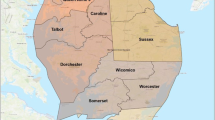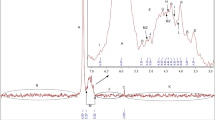Abstract
Incidental phosphorus loss is a concern for surface water quality. Here we showed that the risk of incidental P loss can be minimised, even from highly soluble superphosphate fertiliser, by timing application when overland flow is unlikely. Moreover, we demonstrated that the risk of incidental P loss can be estimated from water solubility, decreasing the need for expensive field trials. As such, we suggest that slowly available fertilisers such as reactive phosphate rock or serpentine super could be used in situations where incidental losses need to be decreased and conditions are suitable e.g., soil pH less than 6 and rainfall greater than 800 mm for reactive phosphate rock.


Similar content being viewed by others
References
ANZECC (2000) Australian and New Zealand guidelines for fresh and marine water quality. Australian and New Zealand Environment and Conservation Council—Agriculture and Resource Management Council of Australia and New Zealand, Canberra ACT
Carpenter SR, Caraco NF, Correll DL, Howarth RW, Sharpley AN (1998) Nonpoint pollution of surface waters with phosphorus and nitrogen. Ecol Appl 8:559–568
Cornish PS, Hallissey R, Hollinger E (2002) Is rainfall simulator useful for estimating phosphorus runoff from pastures—a question of scale-dependency? Aust J Exp Ag 42:953–959
During C (1984) Fertilisers and soils in New Zealand farming. P.D. Hasselberg, Government Printer, Wellington, New Zealand
Genstat Committee 7 (2004) Genstat for Windows, 7th edn. Lawes Agricultural Trust, Rothamsted Experimental Station, Harpenden UK
Gillingham AG, Thorrold BS, Wheeler DM, Power IL, Gray MH, Blennerhasset JD (1997) Factors influencing phosphate losses in surface runoff water. In: Furness H (ed) Proceedings of the 24th NZFMRA Technical Conference, Invercargill, New Zealand. New Zealand Fertiliser Manufacturers Research Association, Auckland New Zealand, pp 144–153
Haygarth PM, Heathwaite AL, Jarvis SC, Harrod TR (2000) Hydrological factors for phosphorus transfer from agricultural soils. Adv Agron 69:154–178
McColl RHS, Gibson AR (1979) Downslope movement of nutrients in hill pasture, Tiata, New Zealand. III. Amounts involved and management implications. NZ J Ag Res 22:279–286
McDowell RW, Sharpley AN (2002) The effect of antecedent moisture conditions on sediment and phosphorus loss during overland flow: Mahantango Creek catchment, Pennsylvania, USA. Hydrol Process 16:3037–3050
McDowell RW, Monaghan RM, Carey PL (2003) Potential phosphorus losses in overland flow from pastoral soils receiving long-term applications of either superphosphate or reactive phosphate rock. NZ J Ag Res 46:329–337
Preedy N, McTiernan K, Mathews R, Heathwaite L, Haygarth P (2001) Rapid incidental phosphorus transfers from grassland. J Environ Qual 30:2105–2122
Sinclair AG, Johnstone PD, Smith LC, Risk WH, Morton JD, O’Connor MB, Roberts AHC, Nguyen L, Shannon PW (1994) Agronomy, modelling and economics of reactive phosphate rocks as slow release fertiliser for grasslands. Fert Res 36:229–238
Acknowledgements
This work was supported by Ballance Agri-Nutrients Ltd.
Author information
Authors and Affiliations
Corresponding author
Rights and permissions
About this article
Cite this article
McDowell, R.W., Catto, W. Alternative fertilisers and management to decrease incidental phosphorus loss. Environ Chem Lett 2, 169–174 (2005). https://doi.org/10.1007/s10311-005-0099-6
Received:
Accepted:
Published:
Issue Date:
DOI: https://doi.org/10.1007/s10311-005-0099-6




